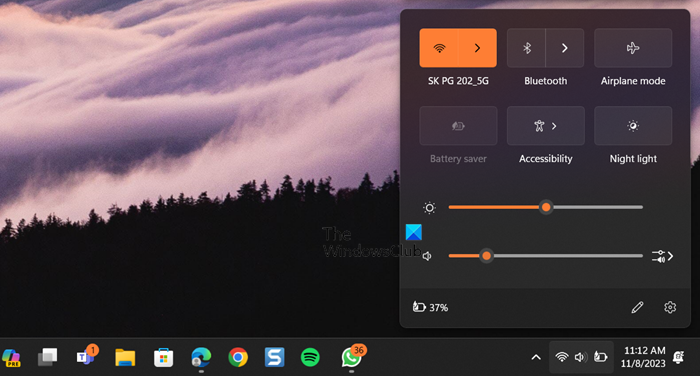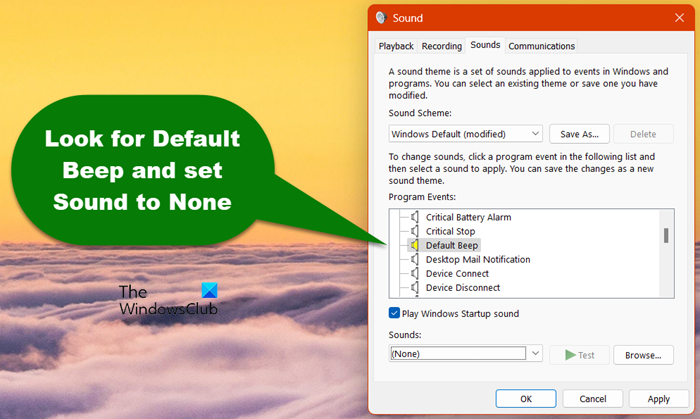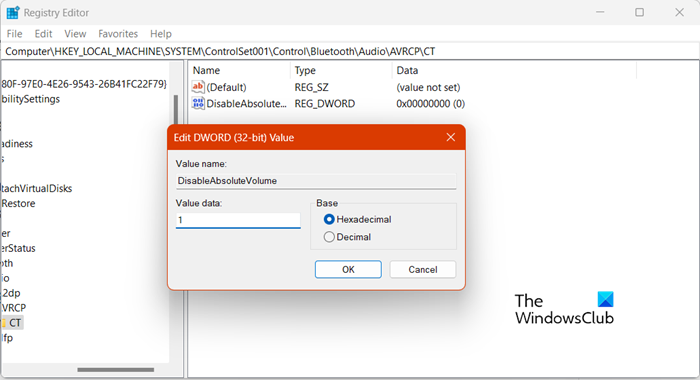Who along with me, is not a fan of the DING sound that Windows makes when changing the Volume using the slider? The sound can be jarring to the ears of the listener, especially if they have attached an earphone. In this post, we will discuss how you can turn off the DING sound when changing the Volume or at least avoid it.

Turn off DING sound when changing Volume in Windows 11
Following are the ways by which you can turn off the DING sound when changing Volume or at least avoid it.
- Change Volume from the Quick Action Menu
- Disable notification or alert sound for your wired Headset or Speaker
- Disable notification or alert sound for your Bluetooth headset or speaker
- Turn off the beep sound from PowerShell
Let us talk about them in detail.
1] Change Volume from the Quick Action Menu

If the only time you find the DING sound jarring is when you connect your computer to a headphone, change the volume from the Quick Action Menu.
To do the same, open the Quick Action menu either by clicking on the Volume icon or by hitting Win + A. You can then easily increase or decrease volume from there.
2] Disable notification or alert sound for your wired Headset or Speaker

One can disable notification or alert sound for their wired headset or speaker from the Control Panel. To do the same, you need to follow the steps mentioned below.
- Open the Control Panel on your system by searching it out of the Start Menu.
- Now, navigate to Hardware and Sound > Sound.
- Click on the Sounds tab.
- Go to the Program Events section and look for Default Beep.
- Click on Default Beep, go to Sounds, and select (None) in the drop-down menu.
- Finally, click on Apply > OK.
This will do the job for you.
Read: How to Enable or Disable Sound Output Device in Windows?
3] Disable notification or alert sound for your Bluetooth headset or speaker

Making changes to your sound settings will not do the same to the Bluetooth headset or speaker, as each one of them has its unique profile. In order to make the changes permanent, we need to configure the Registry Editor and edit Absolute Volume DWORD. Before we do that, let us create a restore point and take a backup of all the registries. They will be used if something goes wrong. To edit the registry, follow the steps mentioned below.
Open Registry Editor by searching it out of the Start Menu.
Now, navigate to the following location.
HKEY_LOCAL_MACHINE\SYSTEM\ControlSet001\Control\Bluetooth\Audio\AVRCP\CT
Look for DisableAbsoluteVolume. If it’s not there, right-click on CT, select New > DWORD (32-bit) Value, and name it DisableAbsoluteVolume.
Now, double-click on it and enter 1 in the Value data field.
Finally, click on OK and restart the system.
This will disable the Beep sound.
In order to enable it again, go to the same location, but this time, set 0 in the Value data field of DisableAbsoluteVolume.
4] Turn off the beep sound using PowerShell
If you don’t want to make all the changes mentioned earlier, the best thing for you would be to execute a command and call it a day. We will be executing the command in PowerShell, which is a built-in command-line interpreter for Windows systems. So, search PowerShell in the Search bar, right-click on the app, and select Run as administrator. Click Yes when the UAC prompt appears. Finally, run the command mentioned below.
Set-service beep -startuptype disabled
This will disable the beep sound. To enable it back, execute the command mentioned below.
set-service beep -startuptype auto
Hopefully, you can disable Windows’s annoying BEEP sound when changing the volume.
Read: How to disable System Beep in Windows?
How do I turn off the Sound when adjusting volume on Windows 11?
The BEEP sound that you hear when adjusting the volume is nothing but an alert sound. If you are not fond of it, either adjust the volume from the Quick Actions menu (steps mentioned earlier) or disable the notification sound using one of the aforementioned methods.
Read: How to disable or enable Loudness Equalization in Windows
How do I manage Sound settings in Windows 11?
Windows 11 has centralized everything including the Sound settings. You can open Settings and go to System > Sound. There you will be able to configure and make your computer’s sound settings the way you want. If you want to know more, check our guide to configure Sound Settings on Windows 11 to get better Audio.
Read Next: Windows 11 Settings: How to open and use them to tweak your PC
Leave a Reply